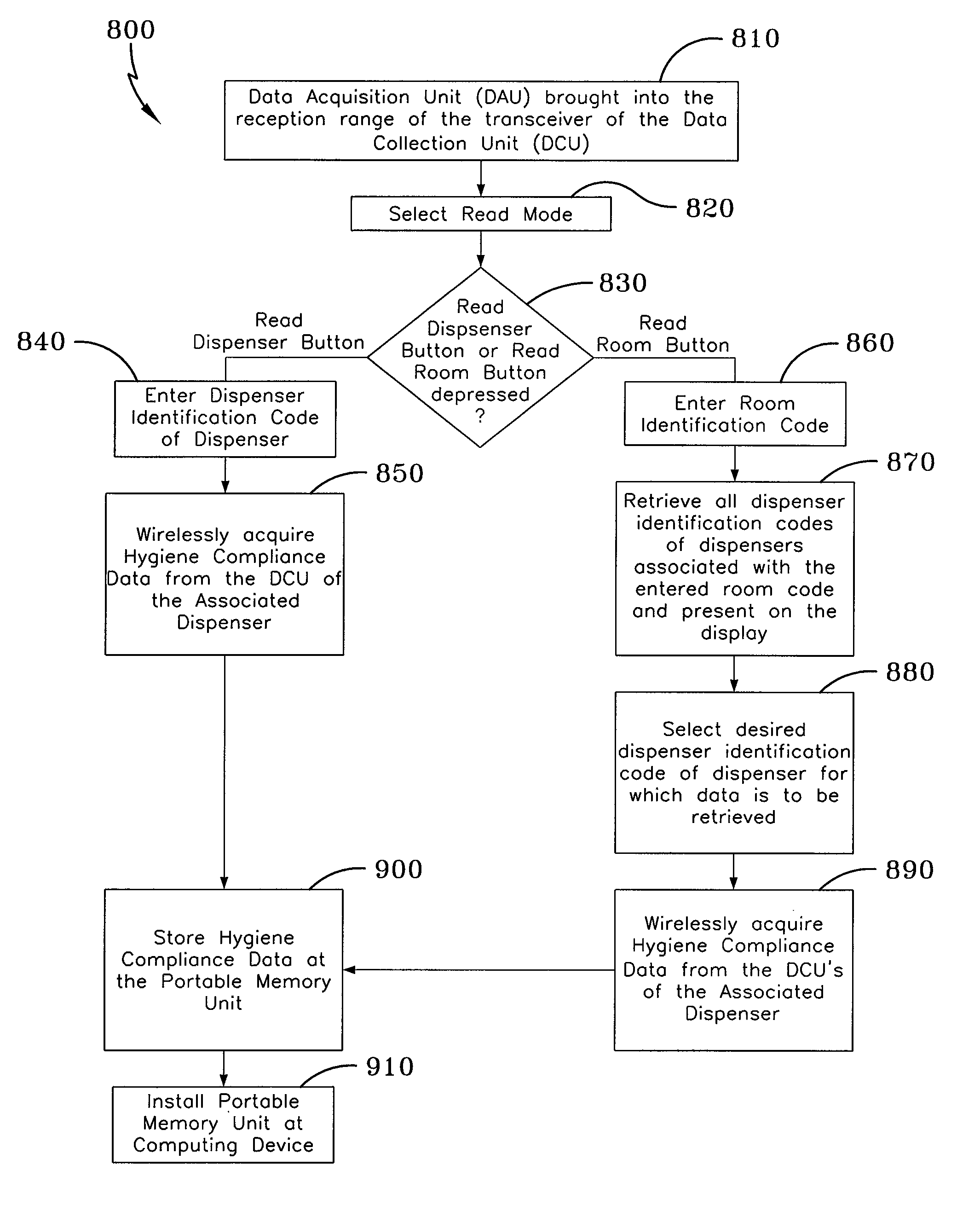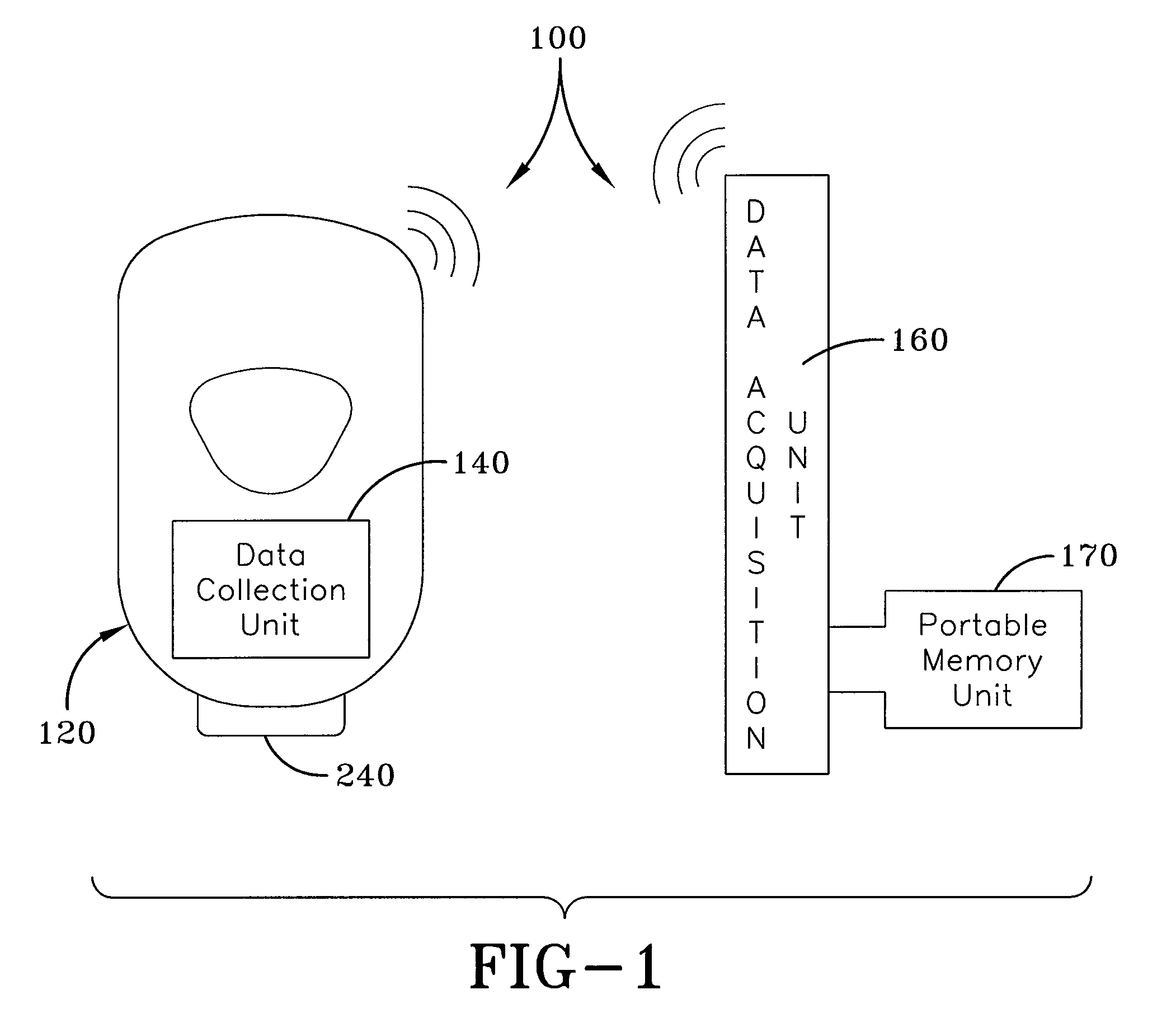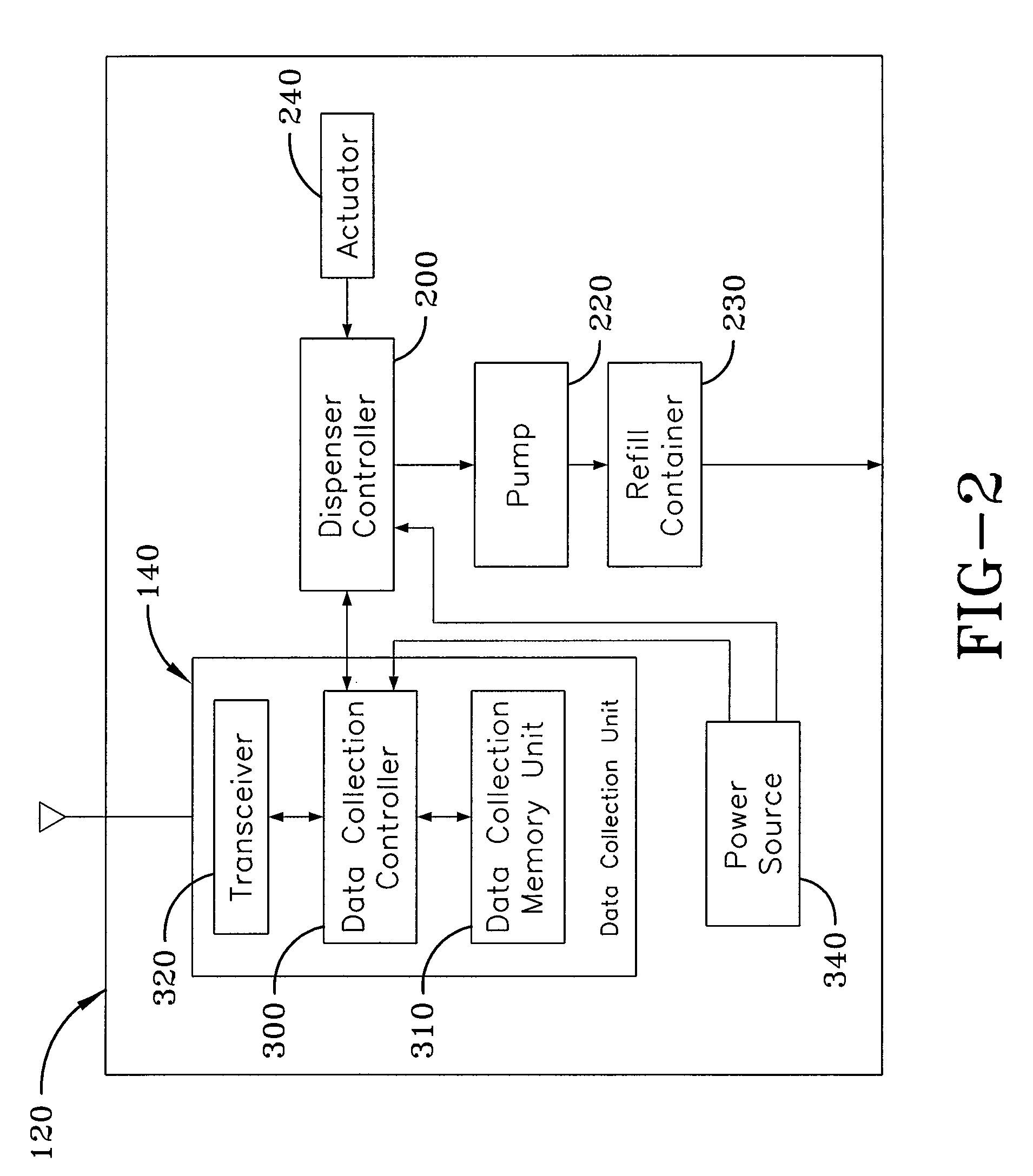Hygiene compliance monitoring system
a monitoring system and hygiene technology, applied in the field of hygiene compliance monitoring systems, can solve the problems of affecting the ability of hygiene compliance monitors to effectively monitor hygiene compliance, requiring retraining, and requiring substantial time and expens
- Summary
- Abstract
- Description
- Claims
- Application Information
AI Technical Summary
Benefits of technology
Problems solved by technology
Method used
Image
Examples
Embodiment Construction
[0020]It is known in the art that hand hygiene compliance is typically calculated as the ratio of the number of actual hand hygiene events to the number of hand hygiene events that should have occurred. Thus, to facilitate the determination of whether hygiene compliance standards are being followed, the system of the present invention generally monitors hand hygiene events that have actually occurred, which may be used in conjunction with data related to the number of hand hygiene events that should have occurred to establish a measure of hand hygiene compliance. Furthermore, the terms “hygiene compliance data” and “hygiene event data” may be used interchangeably throughout the following discussion.
[0021]A certain embodiment of a hygiene compliance monitoring system is generally referred to by the numeral 100, as shown in FIG. 1 of the drawings. The hygiene compliance monitoring system 100 is generally used in connection with a dispenser 120, such as a dispenser that dispenses mater...
PUM
 Login to View More
Login to View More Abstract
Description
Claims
Application Information
 Login to View More
Login to View More - R&D
- Intellectual Property
- Life Sciences
- Materials
- Tech Scout
- Unparalleled Data Quality
- Higher Quality Content
- 60% Fewer Hallucinations
Browse by: Latest US Patents, China's latest patents, Technical Efficacy Thesaurus, Application Domain, Technology Topic, Popular Technical Reports.
© 2025 PatSnap. All rights reserved.Legal|Privacy policy|Modern Slavery Act Transparency Statement|Sitemap|About US| Contact US: help@patsnap.com



